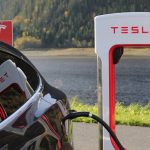Investor attention shifted this week as Morgan Stanley analyst Adam Jonas described Tesla’s newly proposed $1 trillion performance-based compensation plan for CEO Elon Musk as advantageous for shareholders. The plan’s introduction has spurred debate about executive incentives and Tesla’s future business direction, particularly as artificial intelligence and robotics gain increasing prominence in global markets. Many observers remain focused on the underlying operational targets tied to the package, reflecting broader industry conversations on leadership compensation and corporate ambition.
Media reports over the past year frequently centered on Elon Musk’s compensation as an outlier in scale and structure, often highlighting the rarity of awards hinging entirely on challenging, market-dependent milestones. Previous coverage stressed institutional shareholder hesitation and compared Tesla’s board strategies to other major tech companies. More recent discussions, however, indicate a shift towards justifying the value proposition with reference to Tesla’s business expansion into AI and robotics, supplying additional context to the Morgan Stanley note and evolving market perspectives.
How Does the Compensation Package Impact Tesla’s Future?
The proposed 2025 CEO Performance Award requires Tesla to reach an $8.5 trillion market valuation over the next ten years, up from approximately $1.1 trillion today. The plan sets additional performance objectives, such as expanding annual operating profit from $17 billion to $400 billion and achieving significant delivery and subscription milestones across multiple products, including 20 million vehicles, 10 million Full Self-Driving subscriptions, 1 million Tesla Bots, and 1 million Robotaxis in active use. These conditions tie the CEO’s compensation directly to the realization of concrete corporate achievements and future business expansion.
Why Are Robotics a Key Factor in the Analyst’s Assessment?
Adam Jonas pointed to Tesla’s ambitions in developing AI-enabled robotics, particularly the Optimus humanoid robot program, as critical in supporting the compensation plan’s structure. He noted that, “contemplating future global GDP before AI robots is like contemplating global GDP before electricity,” underscoring the significant potential market impact of robotics.
“Yes, a trillion bucks is a big number, but (it) is rather modest compared to the size of the market opportunity,”
he wrote, suggesting that robotics may play a substantial role in Tesla’s long-term valuation.
What Does Tesla’s Board Say About Achieving These Targets?
Tesla’s board stated that the award’s structure aims to connect Musk’s compensation with shareholder interests and the company’s sustained growth. Chair Robyn Denholm noted the emphasis placed on continuing Musk’s leadership as essential in pursuit of such ambitious goals. Addressing the investor perspective, Jonas added,
“In our view, it is a good deal for Tesla shareholders. While the proof is in the execution, at face value, the proposed compensation package aligns Tesla minority…”
Stakeholders evaluating executive compensation linked to futuristic products such as Tesla Bots and Robotaxis may find both potential risk and opportunity in this approach. Lessons drawn from prior high-profile CEO compensation plans indicate that tying incentives to measurable operational and financial achievements can strengthen accountability, provided targets reflect realistic, long-term strategic visions. As AI and automation reshape business landscapes, assessment of leadership compensation packages will likely factor in rapid technological change, market competition, and the difficulty of achieving unprecedented growth targets.
- Tesla’s $1 trillion pay plan sets aggressive goals tied to new products.
- Robotics and AI are key drivers in analyst and board assessments.
- Long-term shareholder value depends on meeting demanding milestones.










